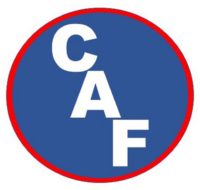Let’s start off with understanding why a department should want to use Class A Foam and CAF.
SAFETY – Using foam drastically reduces the heat of the fire, reducing the time of firefighters’ exposure to heat, toxic gases and carcinogenic substances. The proper use of CAF also reduces the heat so fast without disrupting the thermal layering, that any trapped victim will have the best chance of survival.
LIMITED MANPOWER – CompressedAirFoam.com never recommends sending less firefighters to a fire scene. However, using CAF can reduce the workload of the responding firefighters. Some workload examples include:
- Since foam sticks to carbon materials, spraying foam on an exposure reduces the need to have firefighters constantly applying water to the exposure. One quick coat of foam, and the firefighters can be utilized for other needed tasks.
- Since the fire pulls in needed oxygen, bubbles follow the air flow into the fire, cooling the fire down faster, also reducing the overhaul time and labor.
- Since the hose is actually full of bubbles (lighter than water), it is less of a workload pulling hoselines in to the fire.
LIMITED WATER SUPPLY – Due to the increased surface to mass ratio (STMR) of the bubbles over drops, the CAF is able to absorb the heat faster and more efficiently, thus reducing the total water used on the fire. CompressedAirFoam.com never recommends attacking a fire with a lower gpm. The benefit comes from the lower overall water used.
I-ZONE – This is the wildland/urban interface zone. While some departments don’t consider this to be an issue, many more departments are being affected as the climate changes. CAF provides a very big tool in the tool box for the protection of running wildland fuel fires.
IMPROVED INVESTIGATION – At first, it was thought that a blanket of foam over the evidence was a bad thing, however, once the bubbles popped, the investigators found that since such a small amount of water was used to extinguish the fire, the scene was actually in tack and not washed away like is common with the use of large amounts of water. Investigators love in-tack evidence.
ENVIRONMENTAL IMPACT (SMOKE) – Since Class A Foam is carbon loving, the carbon particles in the smoke cloud (the black stuff) is instantly pulled from the gas cloud, instantly improving air quality and the visibility inside the fire area. In addition to improving the air quality, this translates to an additional safety benefit to firefighters as they can now see where they are going, find victims faster, and reduce the chance of firefighters becoming lost or disoriented inside the fire area.
FISCAL RESPONSIBILITY – This topic is discussed in the section – CAF Costs (The Dollars)
BETTER CUSTOMER SERVICE – This topic is also discussed in the section – CAF Costs (The Dollars)





































